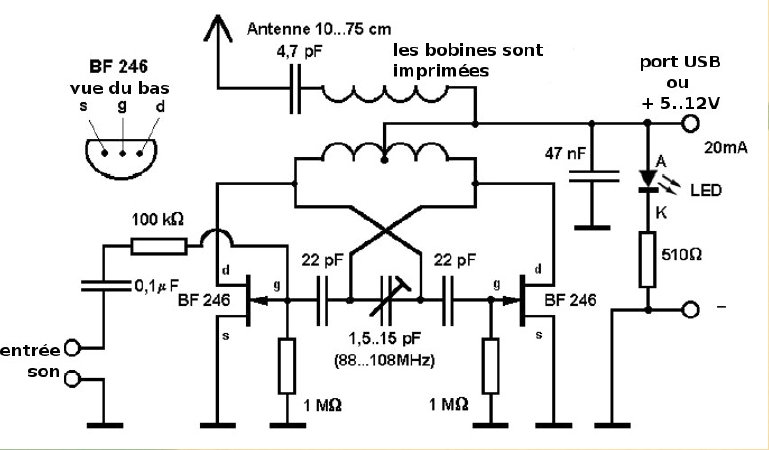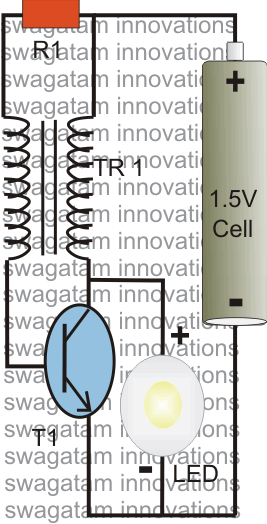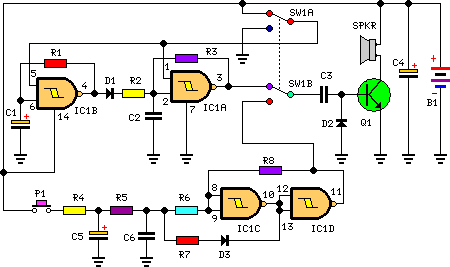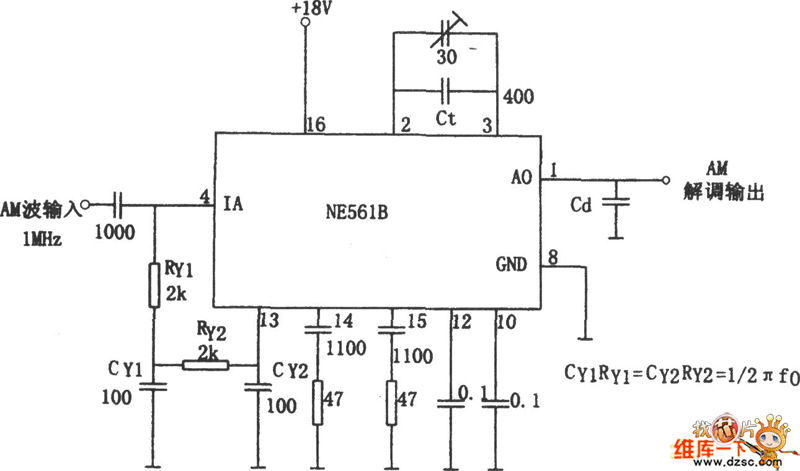
USB FM Transmitter Circuit

Here is a small FM transmitter circuit designed for desktop or laptop use, allowing users to enjoy movies and music from a distance. This USB-powered FM transmitter connects to a computer or MP3 player and broadcasts on a tape FM frequency of 108 MHz. An electronics hobbyist can assemble this FM transmitter kit in approximately 30 minutes. The transistor features a flat side, while the LED has one foot longer than the other; the longer foot is the anode (A), and the shorter foot is the cathode (K). The audio cable (minijack) must be modified from a stereo configuration to a mono cable by soldering the white and red wires together and leaving the yellow wire (ground) aside. The frequency can be adjusted by gently turning the variable capacitor with a screwdriver or a thin, rigid piece of cardboard.
This FM transmitter circuit utilizes a simple design, making it accessible for hobbyists and electronics enthusiasts. The core components include a USB power supply, a transistor for amplification, an LED for power indication, and a variable capacitor for frequency tuning. The circuit operates at a frequency of 108 MHz, which is within the FM band, allowing it to transmit audio signals effectively over short distances.
To assemble the circuit, the user should first prepare the USB power supply, ensuring proper voltage levels are maintained. The transistor should be connected with attention to orientation, as incorrect placement may lead to circuit failure. The LED serves as a visual indicator of power; thus, it should be installed with the correct polarity to function properly.
The audio input is achieved through a minijack connector, which is modified from a stereo to a mono configuration. This involves soldering the left (white) and right (red) channels together while isolating the ground (yellow) wire. This modification is essential for ensuring that the transmitter receives a proper audio signal for broadcasting.
Frequency tuning is accomplished using a variable capacitor, which allows for fine adjustments to the transmission frequency. Care should be taken when adjusting the capacitor, as excessive force may damage the component. A screwdriver or a thin, rigid piece of cardboard can be used to turn the capacitor gently until the desired frequency is reached.
Overall, this FM transmitter circuit offers a practical solution for wirelessly transmitting audio from digital devices, enhancing the listening experience in various environments. Proper assembly and tuning are critical for optimal performance, making it a valuable project for electronics enthusiasts.Here`s a small FM transmitter ciruit for your desktop or laptop to enjoy the movie and music from a distance. This FM transmitter, which is powered by USB, recovers output on your computer or your MP3 player to the relay on the tape FM (frequency 108 MHz).
For Assemblying this FM transmitter kit, an electronics hobbyist will have built in about 30 minutes. The transistor has a flat side, the LED a foot longer than the other is the anode (A), the other is the cathode (K). The audio cable (minijack) must be transformed from a stereo cable into a cable. Soldering together the white and red cables, leaving aside the yellow cable (mass). The frequency setting will be turning the variable capacitor gently with a screwdriver or thin cardboard but rigid.
🔗 External reference
This FM transmitter circuit utilizes a simple design, making it accessible for hobbyists and electronics enthusiasts. The core components include a USB power supply, a transistor for amplification, an LED for power indication, and a variable capacitor for frequency tuning. The circuit operates at a frequency of 108 MHz, which is within the FM band, allowing it to transmit audio signals effectively over short distances.
To assemble the circuit, the user should first prepare the USB power supply, ensuring proper voltage levels are maintained. The transistor should be connected with attention to orientation, as incorrect placement may lead to circuit failure. The LED serves as a visual indicator of power; thus, it should be installed with the correct polarity to function properly.
The audio input is achieved through a minijack connector, which is modified from a stereo to a mono configuration. This involves soldering the left (white) and right (red) channels together while isolating the ground (yellow) wire. This modification is essential for ensuring that the transmitter receives a proper audio signal for broadcasting.
Frequency tuning is accomplished using a variable capacitor, which allows for fine adjustments to the transmission frequency. Care should be taken when adjusting the capacitor, as excessive force may damage the component. A screwdriver or a thin, rigid piece of cardboard can be used to turn the capacitor gently until the desired frequency is reached.
Overall, this FM transmitter circuit offers a practical solution for wirelessly transmitting audio from digital devices, enhancing the listening experience in various environments. Proper assembly and tuning are critical for optimal performance, making it a valuable project for electronics enthusiasts.Here`s a small FM transmitter ciruit for your desktop or laptop to enjoy the movie and music from a distance. This FM transmitter, which is powered by USB, recovers output on your computer or your MP3 player to the relay on the tape FM (frequency 108 MHz).
For Assemblying this FM transmitter kit, an electronics hobbyist will have built in about 30 minutes. The transistor has a flat side, the LED a foot longer than the other is the anode (A), the other is the cathode (K). The audio cable (minijack) must be transformed from a stereo cable into a cable. Soldering together the white and red cables, leaving aside the yellow cable (mass). The frequency setting will be turning the variable capacitor gently with a screwdriver or thin cardboard but rigid.
🔗 External reference





